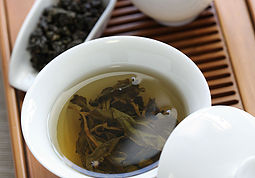
Guangzhou
Living Here
Guangzhou is modern and exciting! It is the third largest city in China in terms of population and is one of the ten largest cities in the country in area. Due to its size, getting around the city can take a lot of time, so it is a good idea to choose where to live based on your priorities.

Cost of living in Guangzhou
From clothes to food, buying things that are produced more locally could actually turn out to be quite a bargain. If you’re at a fabric or farmers market, it’s also common to haggle for lower prices.
If you’re used to brand-name goods however, be prepared to pay high import taxes. Food prices are quite high especially if you are in need of Western products. You may also be hard pressed to find reasonable prices when it comes to items like avocados and cherries.

Accommodation Cost

Buildings in Guangzhou generally expand vertically rather than horizontally. However, there is a variety of housing types to choose from and you should be able to find something to your liking.
Transportation

Guangzhou Railway Station
Guangzhou Railway Station is in Huanshi Road and it is the largest and the most important station in Guangzhou at present. Trains depart to Beijing, Wuhan, Nanjing, Chengdu, Chongqing, Xi’an, Lhasa and many other cities in China.
Subway
In order to solve the problem of crowded urban traffic, the subway of this city has been extended at the speed of about 22 miles (35 km) per year since 2004. There are nine subway lines used in the city at present. The subway utilizes a stage fare system. The longer the journey the more you pay. At present, the subway has connected most important parts of the city, including Baiyun Airport, the Railway Station, East Railway Station, South Railway Station and Foshan City. The subway trains use Chinese mandarin, Cantonese and English to report station names. It is very helpful for the English-speaking passengers. The trains arrive at stations every about 3 minutes during the peak hour and every about 7 minutes after 21:00. Most lines are open from 6am to 11pm.


City Bus
City buses are easily accessible in the city, including daytime lines, night lines, airport shuttle buses, tourist buses and BRT lines. Apart from that, three sightseeing bus lines are in service which takes tourists to the major attractions in town. This is a very cheap option of transport as the flat fee is ¥2 per trip, however it take a while to reach a destination as they make stops quite often.
Ship
Guangzhou is located beside the Pearl River, and it is one of the most famous port cities in China. The Pearl River is the second largest navigable river in China. Passengers can take ships to Hong Kong, Macau and Haikou which is very convenient.
There are many ports in Guangzhou including Humen Port, Xinsha Port, Huangpu Port, Nansha Port and many other ports. The ship routes link Guangzhou to hundreds of ports including domestic ports and foreign ports. Most of these ports are cargo ports.
However, three ports provide passenger transport: 1) Panyu Lotus Mountain Port provides high speed passenger liners to Hong Kong China Ferry Terminal in Hong Kong daily, 2) Huangpu Port offers ships to Xiuying Port in Haikou, and 3) Nansha Port operates ships to Macau Maritime Ferry Terminal in Macau.

Food
Guangzhou is universally known for its good food although as an expat adjustments need to be taken into consideration. Cantonese cuisine is one of the Famous Eight in China with different flavors and styles, by using diverse and delicate materials, exotic spices and various cooking skills. Cantonese cuisine, as epitome of Chinese food culture, is a mixture of tradition and modern, east and west. Basically, it is also a combination of local dishes from the different prefectures of Guangdong Province, or even from other provinces and abroad. Cantonese dishes are often characterized with various unusual ingredients and materials. Apart from seafood, animals, insects and worms, flowers and weeds are all made into dishes. There is a variety of Cantonese dim sum, sweet or salty. The delicious Cantonese-style dim sum served with tea offers a fresh flavor in leisure time.
A lot of the time the restaurants will only have menus in Chinese so brace yourself if you just randomly pick an item. But noodles and rice will always finds its place on every plate.

Yuntun Mian (Wonton Noodle)
Yuntun Mian (Wonton Noodle): Go to Shangxia Jiu Lu, Xihua Lu and Renmin Lu. You will find many eateries that serve Wonton Noodles. Cantonese like to have the delicious Yuntun Miao for breakfast.

DimSum
Cantonese dim sum ranks the best in the whole country. Exquisitely made dim sums attract your eyes and stomach. Panxi Restaurant (Panxi Jiujia) creates 1,000 kinds of dim sums. Among the various choices of dim sums, you may choose the most typical ones: Shrimp Dumpling, Steamed Shaomai, Steamed Vermicelli Roll and so on.

Gongfu Cha
Cantonese drink Gongfu Tea for enjoyment in their leisure time. It was popular in the Chaozhou and Shantou areas, and now has spread in Guangzhou. Serving Guangfu Tea requires strict attention to the teapot, tea leaves, the water quality and even how to make the tea, how to pour and how to drink the tea. The teapot in use is as small as a fist and the teacup as small as half a Pingpong ball. Give it a try!






